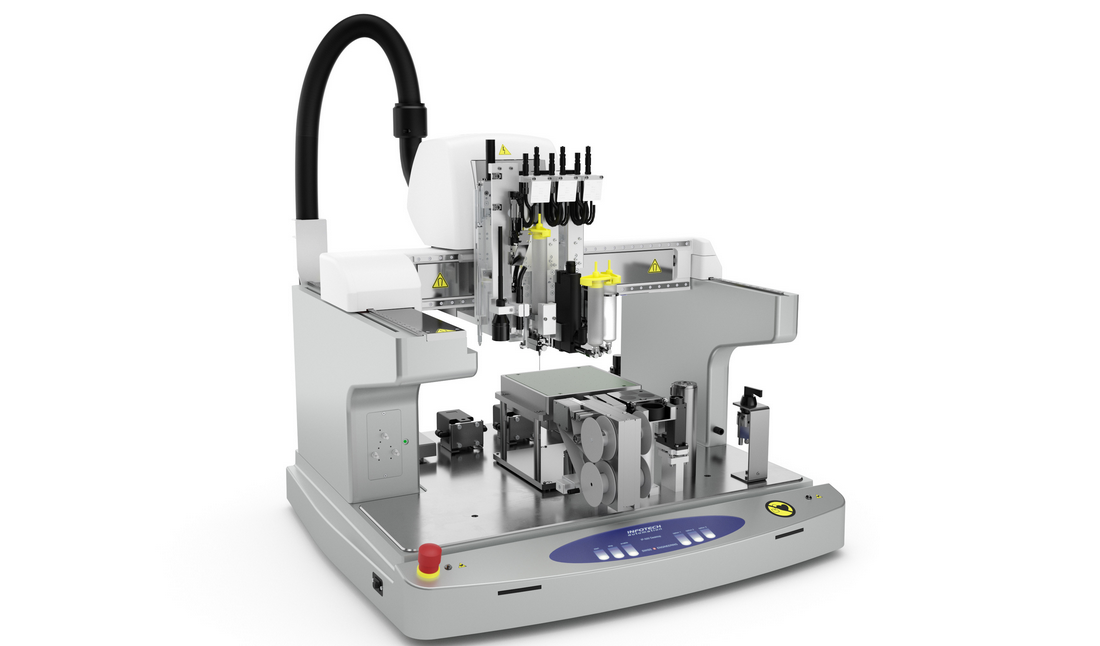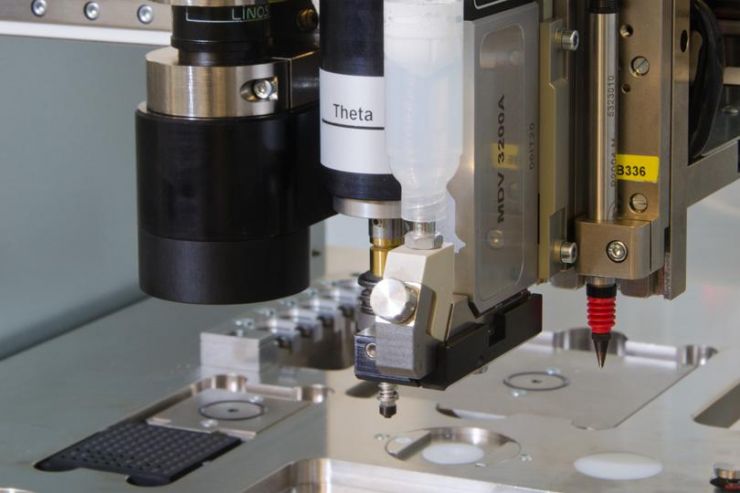Automation company Infotech, together with adhesives manufacturer DELO, has developed a new desktop material jetting 3D printer capable of fabricating multi-material parts.
The machine, which is based on Infotech’s IP-500 Desktop Dispenser, is characterized by its unique multi-head system, whereby several dispensers operate in parallel, allowing multiple liquid resins to be processed simultaneously. The dispensers are especially compatible with DELO’s UV-curable epoxy resins, enabling users to 3D print functionally-graded structures with varying physical properties.
The partners have stated that the new system is primarily intended for prototyping and small-series production purposes, with target industries including automotive and microelectronics.

Tri-material 3D printing
Infotech’s system can be kitted out with up to three different dispensing valves, enabling tri-material 3D printing. Users have the option to choose between a plethora of established valve types developed by either of the partners, including jet valves, time-pressure valves, and screw dispensers, with each valve being housed in its own separate vertical axis. Since each head can be operated in tandem with its siblings, users can combine the different resins within a single layer to precisely control material composition.
Much like any resin-based material jetting 3D printer, the Infotech system relies on UV light to cure the dispensed liquid material. This is done via a UV lamp housed in its own separate printhead, which follows the toolpath of the last active dispensing head. Layer thickness is determined by a non-contact height measurement (a camera), and the system reportedly features integrated real-time control. As such, the working distances of the dispensing heads can be modified and corrected on the fly, which should result in fewer print failures.

Functionally-graded part production
To truly unlock the potential of functionally-graded parts, a wide variety of materials is needed – this is where DELO’s epoxy resin portfolio comes in. The company manufactures materials that display a plethora of physical properties, including transparency, conductivity, and flexibility. According to DELO, the company’s resins are highly temperature and media-resistant, and are not too dissimilar to high-performance polymers. Since DELO’s printing materials have similar chemical properties, they can all be mixed and matched to suit the needs of the user, and display excellent adhesion and isotropy when in contact with one another.
Therefore, users can precisely vary their desired properties across 3D printed components. This means parts can be manufactured with rigid and flexible areas or opaque and transparent areas, with full control over wall thicknesses and feature details. Furthermore, the entire dispensing and curing process is fully digitized and automated, along with the cleaning of the dispensing nozzles.

As Infotech has no doubt realized, the ability to print with multiple materials opens up a multitude of pathways for additive manufacturing. In a similar vein, researchers from Martin Luther University Halle-Wittenberg (MLU) recently developed a new hybrid additive manufacturing process combining both extrusion and inkjet-based 3D printing. The approach allowed the scientists to integrate liquid inks directly into solid material matrices, enabling 3D printed components composed of multiple physical states.
Elsewhere, at Yokohama National University, a team of researchers recently developed a new 3D printing method capable of fabricating multicolor microstructures using different materials. The SLA-based technique works by suspending multiple resins in a droplet state, where they can be exchanged during printing without causing voids or cross-contamination.
Subscribe to the 3D Printing Industry newsletter for the latest news in additive manufacturing. You can also stay connected by following us on Twitter and liking us on Facebook.
Looking for a career in additive manufacturing? Visit 3D Printing Jobs for a selection of roles in the industry.
Featured image shows the new Infotech multi-material 3D printer. Photo via Infotech.



